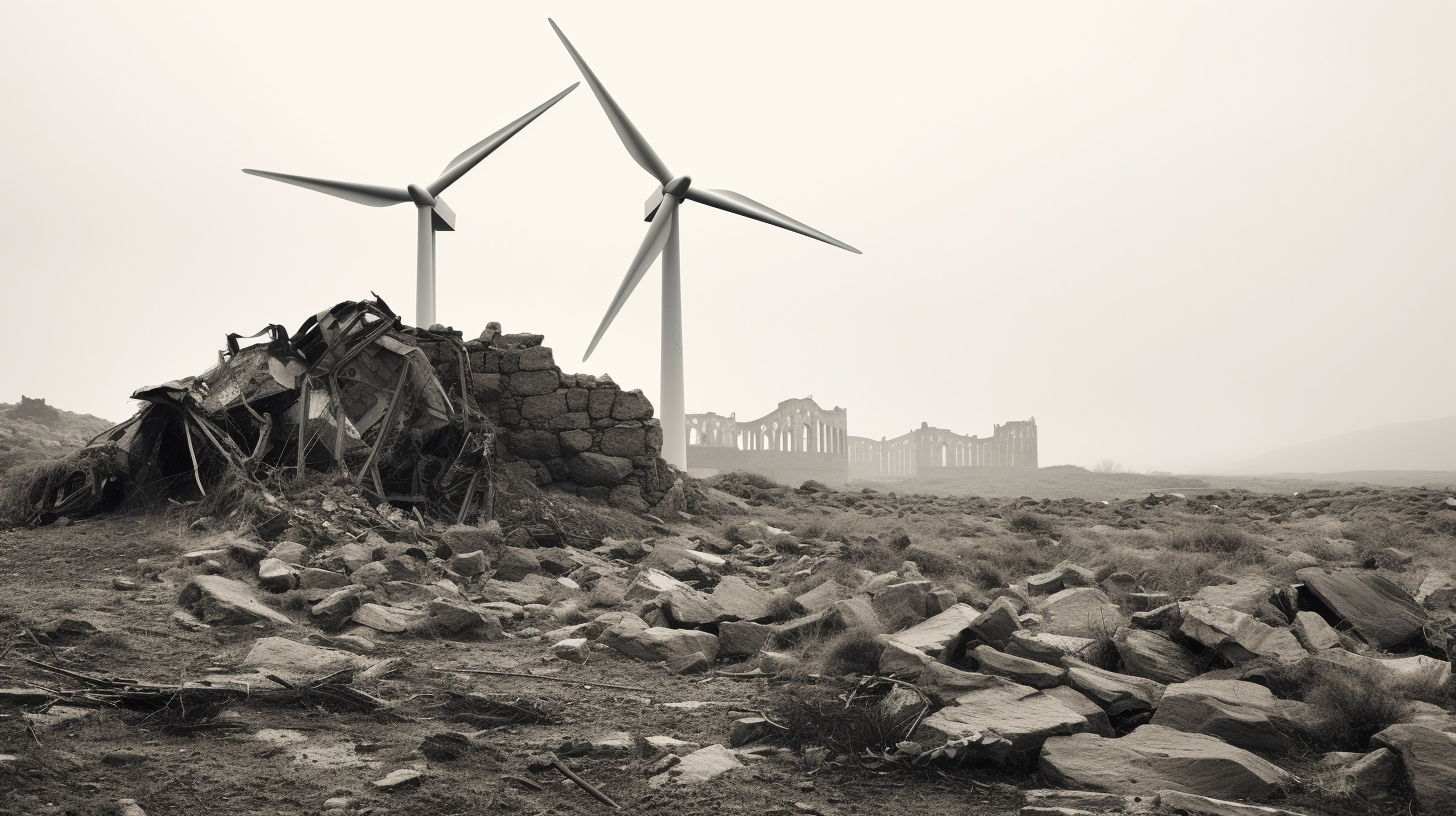In a landscape where silence has replaced the once whirring chorus of blades cutting through the air, there stand the skeletal remains of ambition – the ghost windfarms. These towering structures, now rusted and motionless, punctuate the horizon like the remnants of a vanished civilization. Where we once aspired to harness the wind, we now wander among these monoliths, contemplating a future that never came to be.
These derelict giants, with their blades frozen in time, speak volumes of a past where hope for a sustainable world was still tangible. A time when green energy symbolized redemption for our environmentally sinful ways. Yet, in our present dystopian reality, they stand not as milestones of progress, but as headstones marking the grave of what could have been – a greener, more conscientious world.
What went so terribly wrong? It is a question that echoes amid the howling hyperwinds that have turned once fertile plains into dust bowls. These winds, the tempestuous offspring of our neglect, dance around the windfarms with a bitter mockery. Hyperwinds – as heard in the disheartening tales from ‘Hyperwinds – The Inadvertent Inheritance of Climate Change’ – are the natural world’s violent retort to decades of human provocation. What was once the solution, harnessing the wind, is now a twisted irony as the turbines stand immobilized by the very force they were meant to capture.
In a recent journey I undertook through these fields of desolation, a pervading sense of loss was palpable. ‘Turbines of Despair: Where Green Energy Meets Grim Reality’ offered an insightful prelude to this excursion, exposing the decayed heart of our renewable aspirations. But the gruesome reality can only be appreciated up close. Imagine the view: the sun setting behind derelict windmills, their shadows stretching out like the fingers of a fallen titan. Beneath this colossal mess, floras and faunas have been reclaimed by Mother Nature in a hostile takeover.
I spoke with Cassandra, a former windfarm operator whose eyes mirrored that same dystopian sunset. ‘You’d believe that these propellers might spin just one last time,’ she said, her voice barely audible over the whispering gales. It was clear from our conversation that Cassandra, like her monolithic charges, has become a ghost in this post-hope world. Her melancholy words burrowed into the soul: ‘We’re living in the echoes of what should have been.’
As night falls on the ghost windfarms, one cannot help but feel a chill that goes deeper than the flesh. It is the realization that we’ve become wanderers in a self-inflicted purgatory. The sight of these majestic energy giants, now nothing but silent sentinels of a misguided past, forces the observer into a state of contemplation – on how humanity’s best intentions led to our bleakest outcomes.
The ghost windfarms – are they not a paradox? Built to fight the very climate phenomenon that now renders them impotent, they are harbingers of a missed opportunity. As ‘Hyperwinds’ has shown us, even our boldest environmental endeavors are susceptible to the whims of the tempests we’ve unleashed.
In concluding this journey through the rusted rows of failure, one must contemplate the ghost windfarms as more than just failed technology; they are enduring emblems of a lost cause. Moody testaments to our shortsightedness, they now belong to the birds and the howl of the winds. And like those winds, our time to act has seemingly vanished into thin air.
